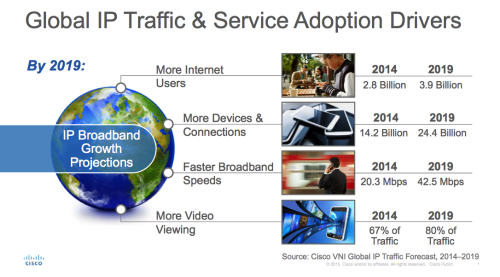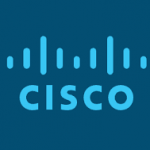
IPfication: an imperative for Indian MSO networks
Indian telecom companies focussing on the burgeoning data services market have been transforming their mobile and wireline broadband networks by moving to IP for the increased speed and load advantages. But as the digitisation drive gathers momentum, the MSOs (cable operators) are in danger of falling behind. Most of the MSOs in India are still largely rooted in a traditional, one-way broadcast network and their core networks are laid out to support and carry these signals unidirectionally. The hybrid fibre-coaxial (HFC) part of the cable networks deploys optical fibre that carries digital video signals from the headend to the subscribers. While there is the benefit of long distance coverage, the fibre is underutilized with no capitalization of the IP related assets; specifically the bandwidth available in the reverse direction is thoroughly underutilized.
Over the last couple of years, Cisco has worked extensively and closely with MSOs in India to provide broadband infrastructure to their end subscribers, including the DOCSIS 3.0 technology to digitize their networks. As MSOs adopted the digitization mandate, they were able to compress many more channels into a narrower band (with the capability of transmitting 500 channels in less than 500 MHz, in comparison to 100 channels in 750 Mhz previously). This allowed MSOs to offer some freed up spectrum for broadband services to their subscribers.
However, this is just the beginning of the broadband journey for these MSOs. If the MSOs want to be well positioned to capture their 30 million subscriber base to offer them broadband services, it becomes imperative for them to invest in the IP-fication of their transmission network and to transform it into a high capacity two-way IP highway. The entire MSO fiber network, including fiber between the headend and the LCO can be converted to IP fibre to transform it into a fully digital network. Once that happens, it would place MSOs in a unique position to compete with the telecom companies in the hugely promising broadband market. It would help the MSOs to build a high capacity IP backbone and distribution network, with cable as the access technology.

A robust pan-India inter and intra-city IP network will provide manifold returns on what they see as a significant investment. In addition to supporting a much larger potential customer base for broadband services, this IP network can also carry broadcast video. A well designed network can reduce capex and opex costs to a fraction of the original traditional setup, by consolidating the number of headends from more than a dozen to one fail-safe pair. Furthermore, it does away with their dependence on telecom providers who often transmit broadcast video for part of their hops.
A converged IP network designed to handle expanded capacity and capabilities is strategically important for MSOs. It is crucial that it is planned for growth, so it can support and expand their traditional customer base, which is the cable subscribers and also be able to handle a new and rapidly growing broadband subscriber base. The network that they lay out today must be robust and flexible enough to handle broadcast video (which constitutes bulk of their bandwidth usage today) from the former, as well as exponentially growing multimedia broadband traffic from the latter (which is expected to outstrip their broadcast video bandwidth demand in no time). In fact, OTT video on broadband is expected to outstrip broadcast video in just a few years.
A careful and strategic IP-fication plan is therefore crucial in deploying a network tailored for growth. While broadcast video today takes up slightly more bandwidth than the broadband traffic for the Indian MSOs, the latter is expected to grow much faster with a CAGR of 33%. In addition to bandwidth, MSOs should also plan for the myriad on-demand, any-device services that consumers expect today. Viewers today want customized and interactive TV viewership. Broadband users expect the network to connect their homes, their appliances, their portable and wearable devices and much more.
Cisco can bring to the fore its depth and breadth of experience to help MSOs pull off this IP transformation. We have helped large cable operators in the USA like Comcast, with IP-fication. We have partnered with telecom companies in India for IP-convergence and core unification projects. Partnering with MSOs in India is underway and we believe this will be a successful endeavour to provide another pillar of the foundation for a Digital India.
Tags:- broadband
- cable and satellite
- Cable operator
- Cable TV
- Cisco
- Digital Cable TV
- Digital India
- Hybrid Fibre-coaxial
- ip
- IP Transformation
- LCO
- MSO
- Service Provider
- Telcos
- telecom



